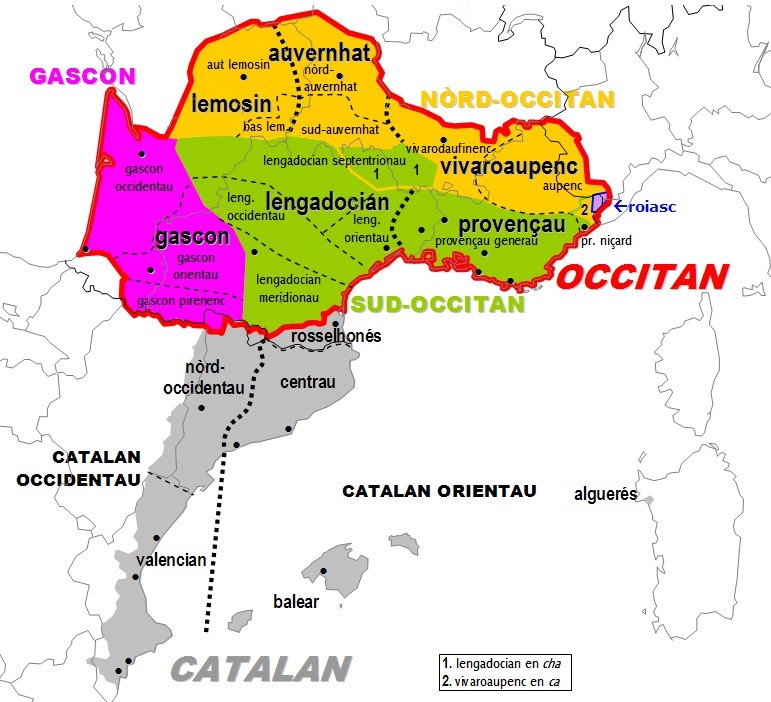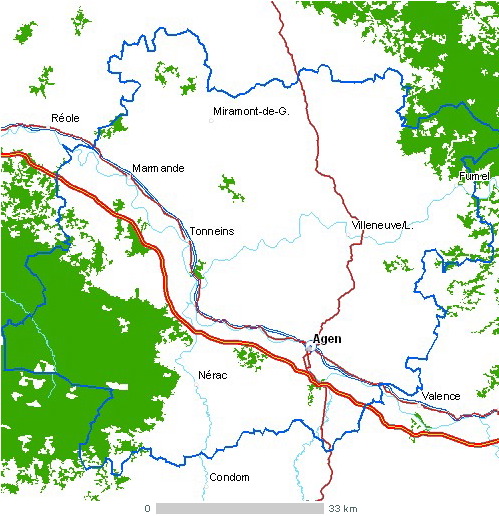|
Castelculier
Castelculier (; Languedocien: ''Castelculhèr'') is a commune in the Lot-et-Garonne department in south-western France. History The name of the village comes from the medieval fortress known as Chasteau Cullier. This castle was destroyed by the duke of Épernon in 1633 by order of Louis XIII, king of France. Geography The Séoune forms most of the commune's south-eastern border. Administration List of mayors since 1791 : The town hall is located in the village of Grandfonds. Lordship of Castelculier List of the lords of Castelculier Main sights * Church of Saint-Amans Personalities * Jean Florimond Boudon de Saint-Amans * Jean-Baptiste Alexandre Damaze de Chaudordy, French diplomat See also *Communes of the Lot-et-Garonne department The following is a list of the 319 communes of the French department of Lot-et-Garonne. The communes cooperate in the following intercommunalities (as of 2022): [...More Info...] [...Related Items...] OR: [Wikipedia] [Google] [Baidu] |
Agglomération D'Agen
Agglomération d'Agen is a '' communauté d'agglomération'', an administrative entity, in the Nouvelle-Aquitaine, in southern France. Administrative center: Agen. It was formed in January 2022 by the merger of the communauté d'agglomération d'Agen and the communauté de communes Porte d'Aquitaine en Pays de Serres. The communauté d'agglomération d'Agen was formed in January 2013 by the merger of the former communauté d'agglomération d'Agen and the communauté de communes du canton de Laplume-en-Bruilhois, and was also joined by the commune Pont-du-Casse. It covers 44 communes, and has a population of approximately 104,000.CA Agglomération d'Agen (N° SIREN : 200096956) BANATIC. Accessed 15 March 2022. It is the largest such ''communa ... [...More Info...] [...Related Items...] OR: [Wikipedia] [Google] [Baidu] |
Séoune
The Séoune (french: la Séoune) is a long river in the Lot, Tarn-et-Garonne and Lot-et-Garonne '' départements'', southwestern France. Its source is at Sauzet. It flows generally southwest. It is a right tributary of the Garonne into which it flows between Lafox and Boé, near Agen. ''Départements'' and communes along its course This list is ordered from source to mouth: * Lot: Sauzet, Carnac-Rouffiac, Bagat-en-Quercy, Fargues, Montcuq, Belmontet, Valprionde, * Tarn-et-Garonne: Belvèze, Bouloc, Lauzerte, Montagudet, Touffailles, Miramont-de-Quercy, Fauroux, Brassac, Castelsagrat, Montjoi * Lot-et-Garonne: Saint-Maurin * Tarn-et-Garonne: Perville * Lot-et-Garonne: Tayrac, Puymirol, Saint-Pierre-de-Clairac, Castelculier Castelculier (; Languedocien: ''Castelculhèr'') is a commune in the Lot-et-Garonne department in south-western France. History The name of the village comes from the medieval fortress known as Chasteau Cullier. This castle was destroyed by t ... [...More Info...] [...Related Items...] OR: [Wikipedia] [Google] [Baidu] |
Nompar Of Caumont (1391-1446)
Nompar of Caumont (1391–1446) was a Gascon lord who left written accounts of his pilgrimages to Santiago de Compostela and Jerusalem. His work has also contributed lexicographic inputs to the Dictionary of Middle French. Biography His family had long allied with the English. He had been named for his paternal grandfather, Nompar of Caumont, the King of England's seneschal of Agenais, who was appointed in April 1400 in English Gascony. During his minority he was brought up by his cousin the count of Foix, then married young and had two sons.His eldest son was probably killed in 1426. He left for Compostela in July 1414, at the age of twenty-three, then for Jerusalem, between February 1419 and April 1420. He was, at that time, known as lord of Caumont, Castelnau, Castelculier and Berbiguières. He was exiled in 1443 by Charles VII, King of France, and dispossessed of his lands in favor of his brother. He died in England three years later, leaving written accounts of hi ... [...More Info...] [...Related Items...] OR: [Wikipedia] [Google] [Baidu] |
Communes Of The Lot-et-Garonne Department
The following is a list of the 319 communes of the French department of Lot-et-Garonne. The communes cooperate in the following intercommunalities (as of 2022):BANATIC Périmètre des EPCI à fiscalité propre. Accessed 15 March 2020. *CA * Communauté d'agglomération du Grand Villeneuvois *CA Val de Garonne Agglomération *Communauté de communes |
Communes Of France
The () is a level of administrative division in the French Republic. French are analogous to civil townships and incorporated municipalities in the United States and Canada, ' in Germany, ' in Italy, or ' in Spain. The United Kingdom's equivalent are civil parishes, although some areas, particularly urban areas, are unparished. are based on historical geographic communities or villages and are vested with significant powers to manage the populations and land of the geographic area covered. The are the fourth-level administrative divisions of France. vary widely in size and area, from large sprawling cities with millions of inhabitants like Paris, to small hamlets with only a handful of inhabitants. typically are based on pre-existing villages and facilitate local governance. All have names, but not all named geographic areas or groups of people residing together are ( or ), the difference residing in the lack of administrative powers. Except for the municipal arr ... [...More Info...] [...Related Items...] OR: [Wikipedia] [Google] [Baidu] |
Languedocien Dialect
Languedocien (French name, ), Languedocian or Lengadocian (), is an Occitan dialect spoken in rural parts of southern France such as Languedoc, Rouergue, Quercy, Agenais and Southern Périgord. It is sometimes also called Languedocien-Guyennais. Due to its central position among the dialects of Occitan, it is often used as a basis for a Standard Occitan. About 10% of the population of Languedoc are fluent in the language (about 300,000), and another 20% (600,000) "have some understanding" of the language. All speak French as their first or second language. Geographic distribution Languedocien is spoken in certain parts of three French regions. * Occitanie: Aveyron, Lot, Tarn, Tarn-et-Garonne except Lomagne, Ariège (except a western part), Haute-Garonne (except the districts of Saint-Gaudens and Muret), Aude, Hérault, Lozère, western and northern parts of Gard and Fenouillèdes. * Nouvelle-Aquitaine: south of the Dordogne, east of the Gironde, north-eastern two-thir ... [...More Info...] [...Related Items...] OR: [Wikipedia] [Google] [Baidu] |
Lot-et-Garonne
Lot-et-Garonne (, oc, Òlt e Garona) is a department in the Nouvelle-Aquitaine region of Southwestern France. Named after the rivers Lot and Garonne, it had a population of 331,271 in 2019.Populations légales 2019: 47 Lot-et-Garonne INSEE Its prefecture and largest city is Agen. History Lot-et-Garonne is one of the original 83 departments created on 4 March 1790, as a result of the . It was created from part of the province of[...More Info...] [...Related Items...] OR: [Wikipedia] [Google] [Baidu] |
Departments Of France
In the administrative divisions of France, the department (french: département, ) is one of the three levels of government under the national level ("territorial collectivities"), between the administrative regions and the communes. Ninety-six departments are in metropolitan France, and five are overseas departments, which are also classified as overseas regions. Departments are further subdivided into 332 arrondissements, and these are divided into cantons. The last two levels of government have no autonomy; they are the basis of local organisation of police, fire departments and, sometimes, administration of elections. Each department is administered by an elected body called a departmental council ( ing. lur.. From 1800 to April 2015, these were called general councils ( ing. lur.. Each council has a president. Their main areas of responsibility include the management of a number of social and welfare allowances, of junior high school () buildings and technical ... [...More Info...] [...Related Items...] OR: [Wikipedia] [Google] [Baidu] |
France
France (), officially the French Republic ( ), is a country primarily located in Western Europe. It also comprises of overseas regions and territories in the Americas and the Atlantic, Pacific and Indian Oceans. Its metropolitan area extends from the Rhine to the Atlantic Ocean and from the Mediterranean Sea to the English Channel and the North Sea; overseas territories include French Guiana in South America, Saint Pierre and Miquelon in the North Atlantic, the French West Indies, and many islands in Oceania and the Indian Ocean. Due to its several coastal territories, France has the largest exclusive economic zone in the world. France borders Belgium, Luxembourg, Germany, Switzerland, Monaco, Italy, Andorra, and Spain in continental Europe, as well as the Netherlands, Suriname, and Brazil in the Americas via its overseas territories in French Guiana and Saint Martin. Its eighteen integral regions (five of which are overseas) span a combined area of ... [...More Info...] [...Related Items...] OR: [Wikipedia] [Google] [Baidu] |
Bernard De Nogaret De La Valette D'Épernon
Bernard de Nogaret de La Valette (1592, in Angoulême – 25 July 1661), duke of Épernon and a French general, was the son of Jean Louis de Nogaret de La Valette and Marguerite de Foix-Candale, granddaughter of the constable of Montmorency. Through his mother's line, Bernard could also claim the English title of Earl of Kendal, originally granted to his ancestor John de Foix in 1446. Life In 1622, Bernard married Gabrielle-Angélique de Verneuil, legitimised daughter of Henri IV and the Marquise de Verneuil, with whom he had a son, Louis-Charles-Gaston de Candale, and a daughter, Anne-Louise-Christine de Foix de La Valette d'Épernon. Gabrielle-Angélique died in 1627 (some say Bernard poisoned her) and in 1634 he married Marie Ducambaut, a niece of Cardinal Richelieu. It was not a happy marriage, as Bernard later conceived a lifelong passion for a middle-class woman named Ninon de Lartigue, who exerted absolute power over him and to whom he gave enormous sums of money ... [...More Info...] [...Related Items...] OR: [Wikipedia] [Google] [Baidu] |
Mayor
In many countries, a mayor is the highest-ranking official in a municipal government such as that of a city or a town. Worldwide, there is a wide variance in local laws and customs regarding the powers and responsibilities of a mayor as well as the means by which a mayor is elected or otherwise mandated. Depending on the system chosen, a mayor may be the chief executive officer of the municipal government, may simply chair a multi-member governing body with little or no independent power, or may play a solely ceremonial role. A mayor's duties and responsibilities may be to appoint and oversee municipal managers and employees, provide basic governmental services to constituents, and execute the laws and ordinances passed by a municipal governing body (or mandated by a state, territorial or national governing body). Options for selection of a mayor include direct election by the public, or selection by an elected governing council or board. The term ''mayor'' shares a linguistic o ... [...More Info...] [...Related Items...] OR: [Wikipedia] [Google] [Baidu] |
1791 In France
Events from the year 1791 in France. Incumbents *Monarch: Louis XVI *The Legislative Assembly (after 1 October) Events January * On 28 January Robespierre discussed the organisation of the National Guard in the Assembly; for three years a hot topic in French newspapers. February *28 February – Day of Daggers; a confrontation between the guards and nobles. March *2 March **Claude Chappe and his brothers first demonstrated the optical telegraph. **Early March provincial militias were abolished and the Département de Paris was placed above the Paris Commune (1789-1795) in all matters of general order and security. *March – The National Constituent Assembly accepts the recommendation of its Commission of Weights and Measures that the nation should adopt the metric system. May * On 9 May, the Assembly discussed the right to petition. * On Sunday 15 May the Constituent Assembly declared full and equal citizenship for all free people of color. * On 16–18 May when the e ... [...More Info...] [...Related Items...] OR: [Wikipedia] [Google] [Baidu] |




